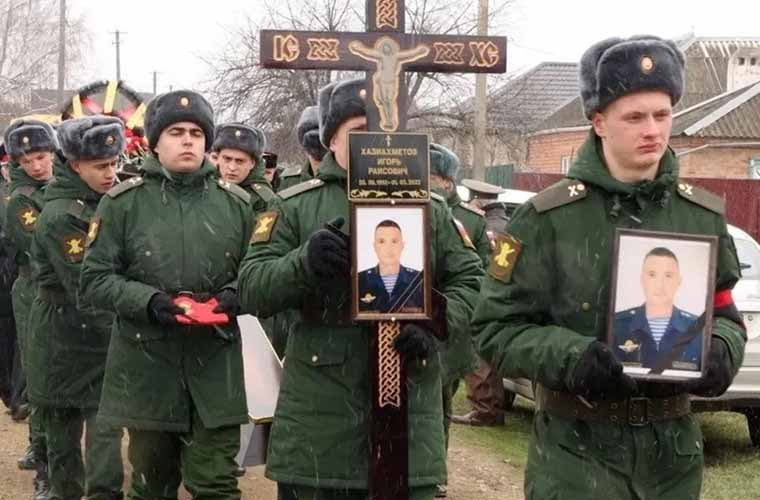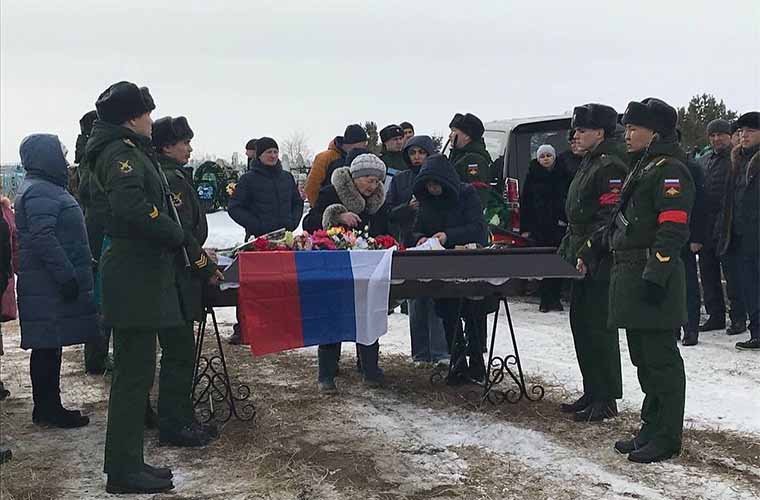On Thursday, February 24, Russia launched a full-scale military invasion of neighboring Ukraine.
The action marked a significant escalation between the countries, which have been in a state of conflict since Russia first supported an invasion of the eastern Donbas region and annexed the coastal peninsula of Crimea in 2014. Russia’s invasion of Ukraine marks the most significant warfare seen in Europe since World War 2.
According to the Kremlin, the invasion is merely a “special military operation” aimed at “denazifying” and “demilitarizing” Ukraine.
Here is The Debrief’s update of the conflict as of the morning of March 11.
Current Military Situation
During the early morning hours of March 11, Russia conducted a series of airstrikes in western and central Ukraine.
Several explosions were reported in the western cities of Lutsk and Ivano-Frankivsk. Up to this point, these regions near the border with Poland have been almost entirely untouched by the war. Reports indicate the airports just outside these two major cities were targeted.
Additional blasts were recorded in the central city of Dnipro, located roughly 200 miles southeast of Kyiv. The Ukrainian State Emergency Service said three airstrikes hit residential areas in Dnipro, causing at least one confirmed death.
Several videos posted on social media were purported to show the strikes on Dnipro. Analysis by The Debrief of the blast wave and secondary flammagenitus cloud suggests at least one of the strikes likely hit a Ukrainian munitions depot. However, this cannot be confirmed at this time.
On March 10, Russian forces on the ground did not appear to renew any significant offensive operations along its western and eastern approaches to the Ukrainian capital of Kyiv. The lull in offensive operations near Kyiv followed a failed attempt by Russia to push an armored column through the Brovary area northeast of Kyiv on March 9.
The situation on the ground in the last 72 hours supports the Ukrainian General Staff’s continued assessments that Russia presently lacks the combat power to successfully launch a large-scale attack on the capital. It is becoming increasingly unlikely that Russia will be able to achieve its goal of encircling Kyiv, and the situation along the Kyiv and northeastern axes could be nearing a standstill.
Russia likewise appears to have reached a stalemate in its attempts to seize the major northeastern cities of Sumy, Chernihiv, and Kharkiv.
The cumulative effects of Ukrainian defense of key cities, coupled with successful ambushes by squad and platoon size forces with anti-armor weapons and Bayraktar TB2 drones on vulnerable Russian positions, have had a devastating impact on Russia’s combat power in the northern area of operations.
In the southern area of operations, Russia continues to focus on advancing towards Mykolaiv. It is difficult to discern, but Russia likely wants to seize the city or cross the Southern Bug River to the north to encircle Mykolaiv and ultimately advance towards Odesa.
As of March 10, Russia’s advances on Mykolaiv are unremarkable and appear stalled.
In the besieged city of Mariupol, Russian proxy forces of the Donetsk People’s Republic (DNR) claimed it had taken control of several neighborhoods —including Azovskiy, Naydenovka, Lyapino, Vinogradar, and the Azovstal metallurgical factory—on March 10. The DNR’s claims may be valid. However, The Debrief cannot independently confirm the purported gains in Mariupol.
The port city of Mariupol has been encircled by Russian forces and subjected to brutal artillery and airstrikes for 10 days. City officials say hundreds of thousands of civilians trapped in the city have been without water, power, heat, and limited food supplies for over a week. Multiple attempts to establish a ceasefire and humanitarian corridors from the city have, so far, all ended in failure.
Russia additionally continues to try limited and largely unsuccessful movements along a third divergent southern advance towards the city of Zaporizhya.
The Debrief continues to assess it is unlikely Russia will achieve any meaningful gains in the southern area of operations, provided it remains committed to three disjointed advances toward Mykolaiv, Zaporizhya, and the encirclement of Mariupol.
In the south, Russia is having to contend with maintaining the occupation of Kherson, home to nearly 300,000 residents. According to the Ukrainian General Staff, Russia has introduced an “administrative-police regime” to maintain order in occupied settlements.
Numerous online videos have shown daily civil protests by Ukrainians living in Russian-occupied regions. According to Ukrainian officials, approximately 400 Ukrainians have been arrested by Russian military police for protesting the occupation.


Russia Suffering Heavy Command Losses
Moscow has not officially commented on its combat losses since a week into the invasion, saying roughly 500 troops had been killed in Ukraine.
On March 11, the Ukrainian General Staff said it had estimated Russia had lost over 12,000 soldiers since February 24. While this figure is likely inflated, there are plenty of reasons to believe that Russia has suffered extremely high casualties in the first three weeks of its invasion.
As of March 11, the open-source intelligence site Oryx had independently confirmed Russia had lost 1,034 pieces of military equipment. The list of lost equipment includes some of Russia’s most advanced hardware, such as 11 T-80BVM tanks.
In addition to the overall loss of troops and equipment, an investigation by The Debrief reveals Russia appears to have also lost considerable field and company-grade officers.
The following Russian officers are believed to have been killed based on in-memoriam posts identified by The Debrief on the Russian social media network VK or Russian district news reports.
- Lieutenant General Andrei Mordvichev – Commander of Russia’s 8th Guards Combined Arms Army
- Major General Andrei Sukhovetsky – Commanding General of the Russian 7th Airborne Division and a deputy commander of the 41st Combined Arms Army
- Major General Vitaly Gerasimov -Chief of Staff of the 41st Army
- Major General Andrei Kolesnikov – Commander of the 29th Combined Arms Army
- Colonel Konstantin Zizevsky – Commander of the 247th Guards Air Assault Regiment
- Colonel Dmitry Pavlovich – Commander of the Marine Battalion, 61st Naval Infantry
- Colonel Sergei Sukharev – Commander of the 331st Guards Parachute Assault Regiment
- Colonel Viktor Isaykin – Unknown
- Colonel Konstantin Ogiy – Commander of the Special Rapid Reaction Unit (SOBR) of the National Guard of the Kemerovo Region
- Colonel Sergey Karasev – Commander of the 31st Guards Air Assault Brigade
- Colonel Andrei Zakharov – Battalion- Tactical Group Commander, 6th Tank Regiment, 90th Tank Division
- Colonel Yuri Yuryevich Agarkov – Commander of the 33rd regiment from Kamyshin
- Lieutenant Colonel Dmitry Safronov – Commander of the 61st Marine Brigade
- Lieutenant Colonel Denis Viktorovich Glebov– Deputy Commander of the 11th Separate Guards Airborne Assault Brigade
- Lieutenant Colonel Aleksey Narzullaevich Khasanov – Deputy Commander of the 31s Aviation Regiment and pilot
- Lieutenant Colonel Okruzhnov Alexander Nikolaevich – Artillery Commander, 104th VDV Regiment, 76th Airborne Division
- Lieutenant Colonel Vladimir Zhoga – Commander of DPR Sparta Battalion
- Lieutenant Colonel Gaisin Renat- Unknown
- Major Ruslan Leonov – SpetsNaz (Special Forces) Commander
- Major Andrey Petrovich Burlakov – Deputy Chief of Staff for Intelligence – Chief of Intelligence of the Regiment
- Major Ruslan Leonov – SpetsNaz (Special Forces) Commander
- Major Ratmir Khabalovich Kudayev – Military Police Officer
- Major Aleksey Ilnitsky -Deputy Commander of the 1st DShB
- Major Dmitry Bezborodov – Rosgvardia Battalion Commander
- Major Vorsyuchenko Alexey Vasilyevich – Operational Battalion Commander, Rosgvardia
- Major Alexander Sergeevich Fedorov – Chief of Communications and Deputy Chief of Staff of Unit #47130, 103rd Rocket Brigade
- Captain Opatsky Alexei Mikhailovich – Military Police Officer
- Captain Dzantiev Aslan Olegovich
- Captain Mashkin Sergey Alexandrovich– Reconnaissance Company Commander
- Captain Alexander Lysenko
- Captain Alexey Levkin – Tank Commander
- Captain Alexey Pankratov – Air Defense Division Commander
- Senior Lieutenant Anton Sitnikov
- Senior Lieutenant Aleksey Aleshko – Intelligence Officer
- Senior Lieutenant Gallyamov Ilvir Ilmirovich
- Senior Lieutenant Danil Kurin – Intelligence Officer
- Senior Lieutenant Tsyren Baldanov
- Senior Lieutenant Andrey Andreyevich Shamko
- Senior Lieutenant Anton Vyacheslavovich
- Senior Lieutenant Magomed Makhachev
- Senior Lieutenant Nikolai Sergeevich Belov – Platoon Commander in the 5th Airborne Assault Co.
- Senior Lieutenant Tsybikzhap Tsydendambaevich Badmaev – Reconnaissance Officer
- Senior Lieutenant Denis Igorevich Zorin
- Senior Lieutenant Alexander Nikolaevich – Aviation Officer
- Senior Lieutenant Nima Damaevich
- Senior Lieutenant Semyonov Ilya Sergeevich
- Senior Lieutenant Anton Starostin – Tank Commander
- Senior Lieutenant Nurmagomed Gadzhimagomedov – Tank Commander
- Lieutenant Vitaly Olegovich Golub– Commander of a motorized rifle platoon of the 20th motorized rifle division
- Senior warrant officer Alexei Fedorovich Kainov
- Warrant Officer Samurkhanov Navruzbeg Samurkhanovich – Senior Signals Officer
This list only includes the names of Russian officers The Debrief could verify as being killed in action from public sources. The actual number of field and company-grade officers is very likely higher. [This list was updated on March 23, 2022.]


Immediate Situations To Watch
Russia likely realizes it presently lacks sufficient combat power to encircle and attack the Ukrainian capital of Kyiv. Along the Kyiv and northeastern axes, Russia will probably take an operational pause for the next 48-72 hours in an attempt to consolidate and refit its forces before attempting to resume any advances on Kyiv.
Ukrainian forces will likely seize upon a Russian operational pause to continue small-scale, highly-agile counter-offensives to try and contain Russian forces in isolated, indefensible positions.
In the southern area of operations, Russian troops will likely continue to try and advance towards Zaporizhya within the next 48-72 hours. Russia would like to try and block the city from the east to set for subsequent operations, should Mariupol fall.
Improved weather forecasts throughout Ukraine will likely increase Russian air and missile attacks in the next 24-72 hours. However, thus far, the Russian Air Force has not demonstrated itself capable of integrating its air and ground forces. Likewise, Russia has shown a poor capacity for real-time Intelligence, surveillance, target acquisition, and reconnaissance (ISTAR). As such, it is unlikely that any increased air attacks will have a meaningful impact on the war’s course.
While clear skies may benefit air attacks, warming ground temperatures in Ukraine will quickly cause the ground to become too soft for heavy armor, significantly limiting Russia’s ability for off-road movement.
Russia will likely continue to use stand-off artillery, missile, and aerial bombardments against the Ukrainian cities of Sumy, Kharkiv, Chernihiv, Mariupol, and Mykolaiv. The threat to civilian casualties in these cities continues to be exceptionally high.
The Debrief continues to assess it is likely that Russia will conduct a false-flag attack to bolster domestic support for the war and justify mobilization of reserves. Any false flag will probably involve the use of illegal chemical weapons.
Three weeks into the invasion and Russia’s armed forces have, so far, failed to demonstrate itself capable of executing an effective combined arms, multi-domain warfare campaign. Likewise, there are presently no indications that the Russian military is reorganizing its efforts in a way that would lead to a sudden change in pace or operational success.
If Russia does not quickly learn from its mistakes and reprioritize its remaining resources, the conflict is reaching a point where Russia’s offensive will likely begin losing irreplaceable momentum.
In light of Russia having a significant advantage in net combat power, due to poor planning and overall execution, current indications are Ukraine will likely be able to force Moscow into a protracted, unwinnable war.
How the Kremlin, particularly Russian President Vladimir Putin, will respond to this reality remains to be seen.
Note: Russia’s invasion of Ukraine is an ongoing military conflict. Events on the battlefield are highly dynamic and can quickly change. Be sure to follow The Debrief on Twitter, @DebriefMedia, or The Debrief’s Tim McMillan @LtTimMcMillan, where we will provide updated information on the conflict.
Follow and connect with author Tim McMillan on Twitter: @LtTimMcMillan or encrypted email: LtTimMcMillan@protonmail.com

